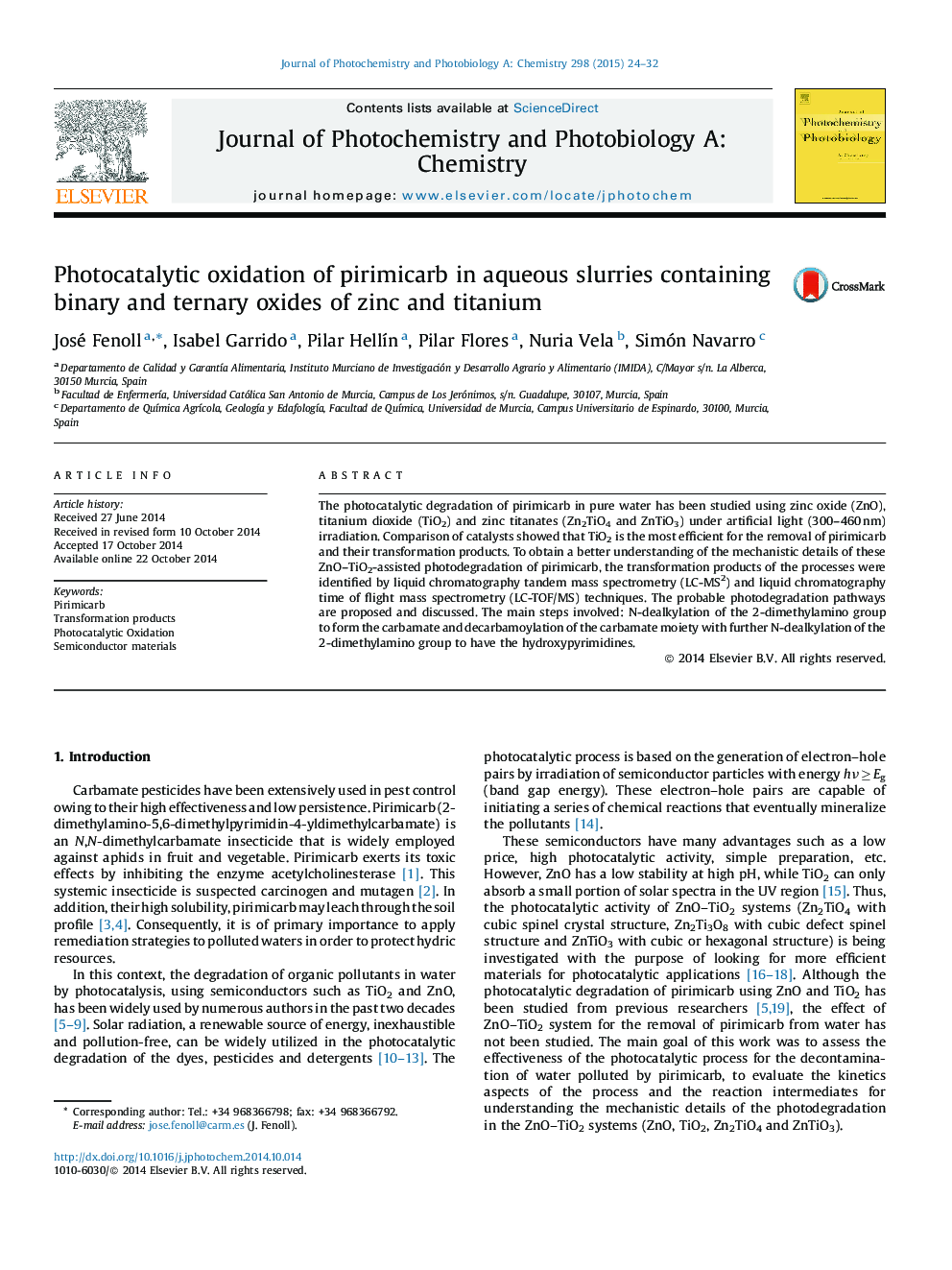| Article ID | Journal | Published Year | Pages | File Type |
|---|---|---|---|---|
| 25869 | Journal of Photochemistry and Photobiology A: Chemistry | 2015 | 9 Pages |
•Photocatalytic oxidation of pirimicarb in water was studied.•The study was performed using ZnO–TiO2 systems under artificial irradiation.•ZnO and TiO2 enhanced photodegradation in comparison with Zn2TiO4 and ZnTiO3.•Pirimicarb was totally degraded using ZnO and TiO2.•5 intermediates were identified and a mechanism of degradation has been proposed.
The photocatalytic degradation of pirimicarb in pure water has been studied using zinc oxide (ZnO), titanium dioxide (TiO2) and zinc titanates (Zn2TiO4 and ZnTiO3) under artificial light (300–460 nm) irradiation. Comparison of catalysts showed that TiO2 is the most efficient for the removal of pirimicarb and their transformation products. To obtain a better understanding of the mechanistic details of these ZnO–TiO2-assisted photodegradation of pirimicarb, the transformation products of the processes were identified by liquid chromatography tandem mass spectrometry (LC-MS2) and liquid chromatography time of flight mass spectrometry (LC-TOF/MS) techniques. The probable photodegradation pathways are proposed and discussed. The main steps involved: N-dealkylation of the 2-dimethylamino group to form the carbamate and decarbamoylation of the carbamate moiety with further N-dealkylation of the 2-dimethylamino group to have the hydroxypyrimidines.
Graphical abstractFigure optionsDownload full-size imageDownload as PowerPoint slide
